It was a matter of time before Canon released the RF version of the popular EF 100-400mm f/4-5.6L II IS USM. This new lens has 100mm more reach, together with a smaller aperture at the longest focal length. I got a chance to review the Canon RF 100-500mm f/4.5-7.1L IS USM to find out how this lens performs.
If you own a Canon mirrorless camera and you like to use longer zoom lenses like the Canon EF 100-400mm f/4-5.6L II, you can get an EF-RF adapter. This combination works perfectly with a Canon EOS R5 and Canon EOS R6.
But wouldn't it be great if you could skip the adapter and use a dedicated RF version of that lens? This is possible with the Canon RF 100-500mm f/4.5-7.1L IS USM. It has 100mm longer reach, making it even more versatile compared to the EF 100-400L II. On the downside is the f/7.1 aperture when zoomed to its longest focal length.

The RF 100-500mm will extend when zooming. At the same time, the aperture will go from f/4.5 to f/7.1.
A Closer Look at the RF 100-500L
The appearance of the RF 100-500L holds no surprises. It is similar to the EF 100-400L II in a lot of ways. The zoom mechanism is practically the same, with a wide zoom ring in the front of the lens barrel. A friction ring will tighten the lens at every focal length. It is not a real locking mechanism, but it tightens the lens enough to keep it in place.
The manual focus ring is a bit smaller compared to the EF version, but perfectly usable if you need manual focus. Between the focus ring and the friction ring, you will find the buttons. There is a focus limiter, the AF/MF switch, and the stabilizer switch, complete with the three stabilizing options.
Just like every other RF lens, the RF 100-500mm also has a programmable control ring. It is situated next to the lens barrel. I find this location a bit hard to reach, but it has the same location as the other white RF telelenses. This makes it easier to get used to.
The tripod mount ring is much improved compared to the EF 100-400L II. It can be removed easily without detaching the lens from the camera. The lens keeps its nice appearance even with the tripod mount ring removed. Although this doesn’t affect image quality, I find it very welcome.
An Aperture of f/7.1
Just like most zoom lenses, the RF 100-500 also changes aperture when zooming. With the RF 100-500mm, you will reach f/7.1 at 500mm. Although this isn’t ideal, it makes these lenses as compact and lightweight as possible.
When you think of it, an aperture of f/7.1 isn’t all too bad. Compared to the EF 100-400L II, you will lose no more than 2/3 a stop of light. At the same time, you gain 100mm focal length, which is a lot. A few tests showed how the RF 100-500 will switch from f/5.6 to f/6.3 at 365mm focal length. and it will keep that aperture at 400mm. It makes the lens only 1/3 stop slower.
Using the RF 100-500mm
I own an EF 100-400mm II, lens and I use it a lot with my Canon EOS 5D Mark IV. This means I am used to this kind of lens. For me, it is a perfect combination for shooting tight and intimate landscapes. You can also use it for birds and wildlife, of course, or even portraits for that matter, although I would prefer a nice 85mm or 70-200mm lens when shooting portraits.
The Canon 5D Mark IV in combination with the EF 100-400L II weighs approximately 3.5 kilograms. It is not lightweight, but also not extremely heavy. Choosing the RF 100-500mm in combination with the Canon EOS R5 saves you approximately 300 grams. The difference is only noticeable if you hold both combinations next to each other.
By the way, these weights are with the L-bracket and lens plate attached.

The Canon EOS R5 with RF 100-500mm on the left. The Canon EOS 5D Mark IV with EF 100-400mm II on the right.
The RF 100-500mm has a five-stop image stabilization system. You will win another stop together with the Canon EOS R5 and Canon EOS R6. These six stops are very welcome, not only because of the focal length but also because of the stabilized image in your viewfinder. It becomes much easier to keep your subject in the frame, especially with the longer focal lengths.
The dual Nano USM motor gives the lens very fast and accurate autofocus. It focuses very quietly, which is perfect if you like shooting from wildlife shelters. The lens allows every autofocus option of the Canon EOS R5 and Canon EOS R6, including the excellent eye autofocus and tracking capabilities.

A robin in the snow. The quality of the lens is outstanding. (EOS R5, RF 100-500mm at 500mm, ISO 100, f/8, 1/320 s)
There is nothing to complain about regarding the image quality of the RF 100-500mm lens. It shows very sharp results over the complete focal range, even with the largest aperture. It seems to have good flare resistance. Although the images show a bit of chromatic aberration (CA) in the extreme corners, it is easy to correct in post-processing.
The RF 100-500mm and Extenders
The lens can be used with the 1.4x and 2x extender, unfortunately with a catch, because you will have to zoom in up to 300mm before the rear lens element is moved forward enough to give clearance for the extender. This way, it becomes possible to use the two extenders in the range from 300mm up to 500mm. With the 1.4x extender, the focal range will be 420-700mm, and with the 2x extender, it will be 600-1,000mm.
Although the use of extenders will cause some image degradation, the images are still very usable. But you will need to feel comfortable with zooming in to 300mm before you can use the extender. Still, I wouldn’t advise using the 2x extender due to the f/14 aperture at 1,000mm and the unavoidable diffraction at that lens opening. If you need such focal lengths, perhaps the Canon RF 800mm f/11 could be a good alternative.
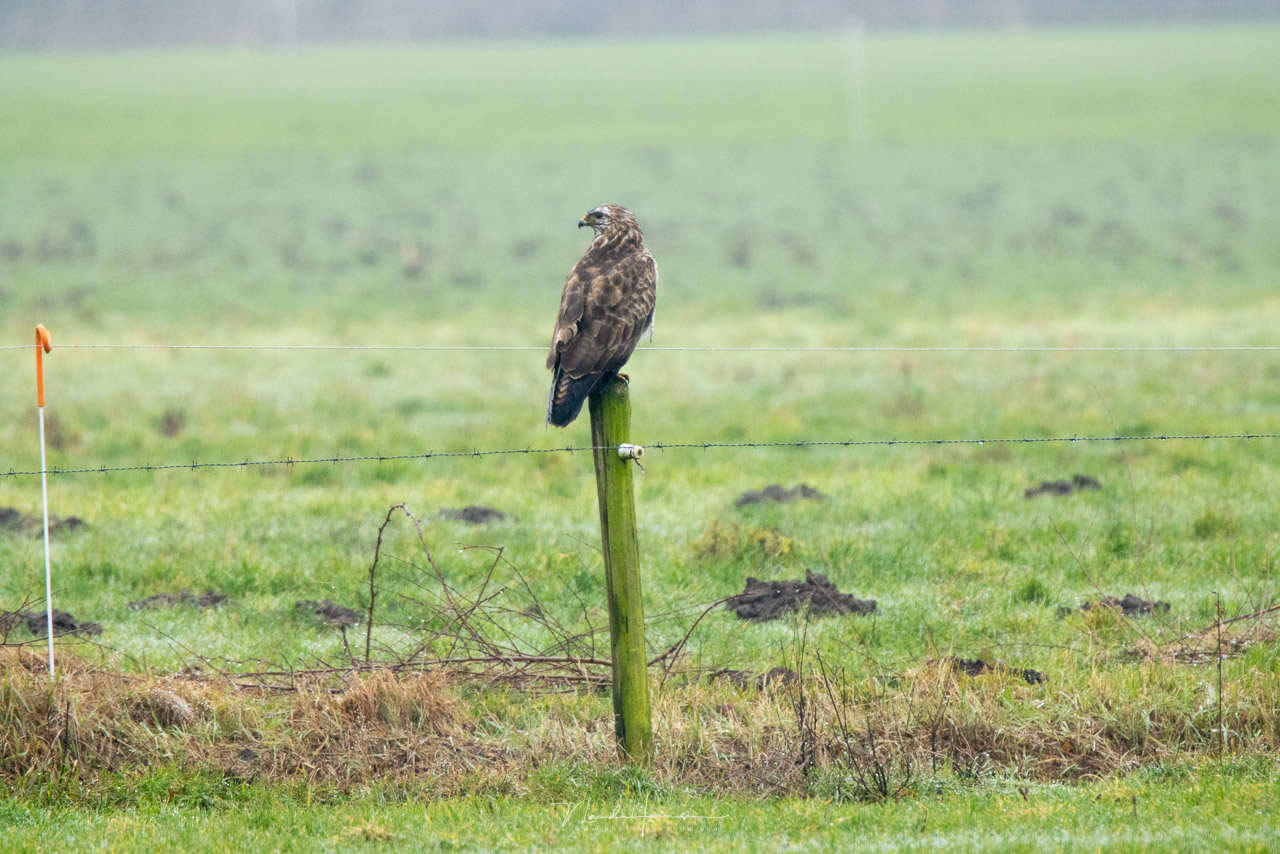
A buzzard, shot with the 2x extender through the rain. (EOS R5, RF100-500mm and 2x extender at 1,000mm, ISO 2,500, f/14, 1/125 s)
My Opinion About the RF 100-500mm
I am very enthusiastic about the RF 100-500mm. It handles very well and feels perfectly balanced with my Canon EOS R5. Although working with the older EF 100-400L II and an adapter is also very workable, I prefer the RF lens. But perhaps I also got affected by a slight case of Gear Acquisition Syndrome.
I find the RF 100-500L much improved compared to its EF predecessor. These improvements make the lens a lot better, I think. The 100mm extra focal length is definitely a nice addition. If I would need to find a downside of this lens, I could mention the f/7.1 aperture. It is approximately 1/3 stop slower at 400mm compared to the EF 100-400L II. But then again, in real life, this doesn’t matter much.
When I think of it, another possible downside is the inability of using extenders with the full zoom range. Although the extenders are supported, I have a strong feeling this lens is mainly intended for use without an extender. Nevertheless, if you need the additional extended focal length, it is possible, but only in the range of 300-500mm.
The Canon RF 100-500mm f/4.5-7.1L IS USM is not the most light-sensitive telezoom lens available, but you will have a very versatile and capable lens. It has very good image quality, and on top of that, it is easy to carry with you. I can recommend it to every landscape and animal photographer.
What I Liked
- Very versatile zoom range
- Five stops stabilization and one extra with a camera that has IBIS
- Weather-sealing
- Well-designed and easily removable tripod mount ring
- Very good image quality
- Dual Nano USM autofocus that is both quiet and fast
- All AF possibilities of the EOS R5 and EOS R6 are available throughout the full zoom range
- Must-have lens for the mirrorless system when shooting birds, wildlife, and landscapes
What I Didn’t Like That Much
- Extenders can only be used when zoomed in to 300mm and longer focal lengths
- Not cheap
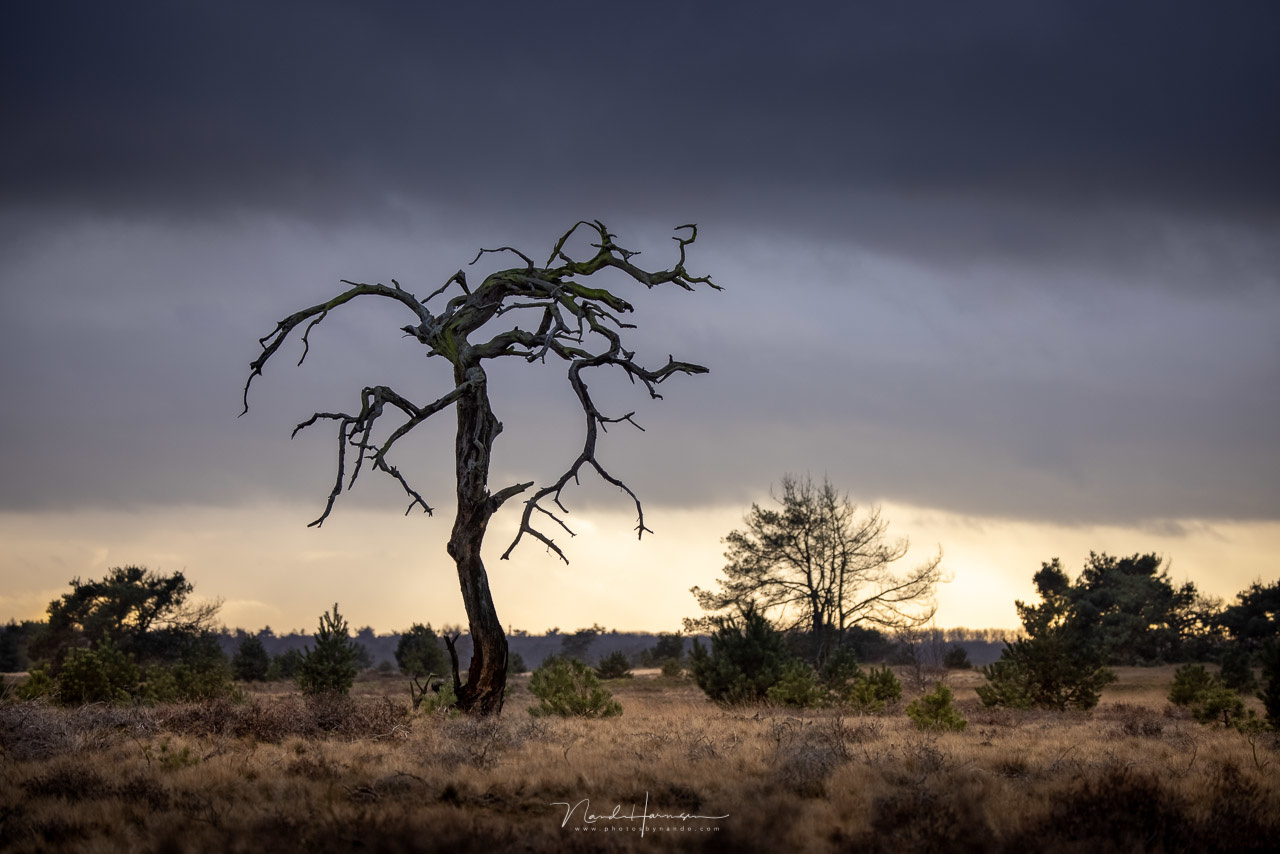
The tree I named Tim Burton tree, shot from tripod (EOS R5, RF 100-500mm at 176mm, ISO 100, f/5, 1/160 s)
Although the lens is not cheap, I do think it is money well spent. But what do you think of this lens? Would you consider buying one if you love shooting landscapes and animals? Or would you prefer the older EF lens with an adapter? Please share your opinion in the comments below.
You can purchase the lens here.
If you're passionate about taking your photography to the next level but aren't sure where to dive in, check out the Well-Rounded Photographer tutorial where you can learn eight different genres of photography in one place. If you purchase it now, or any of our other tutorials, you can save a 15% by using "ARTICLE" at checkout.






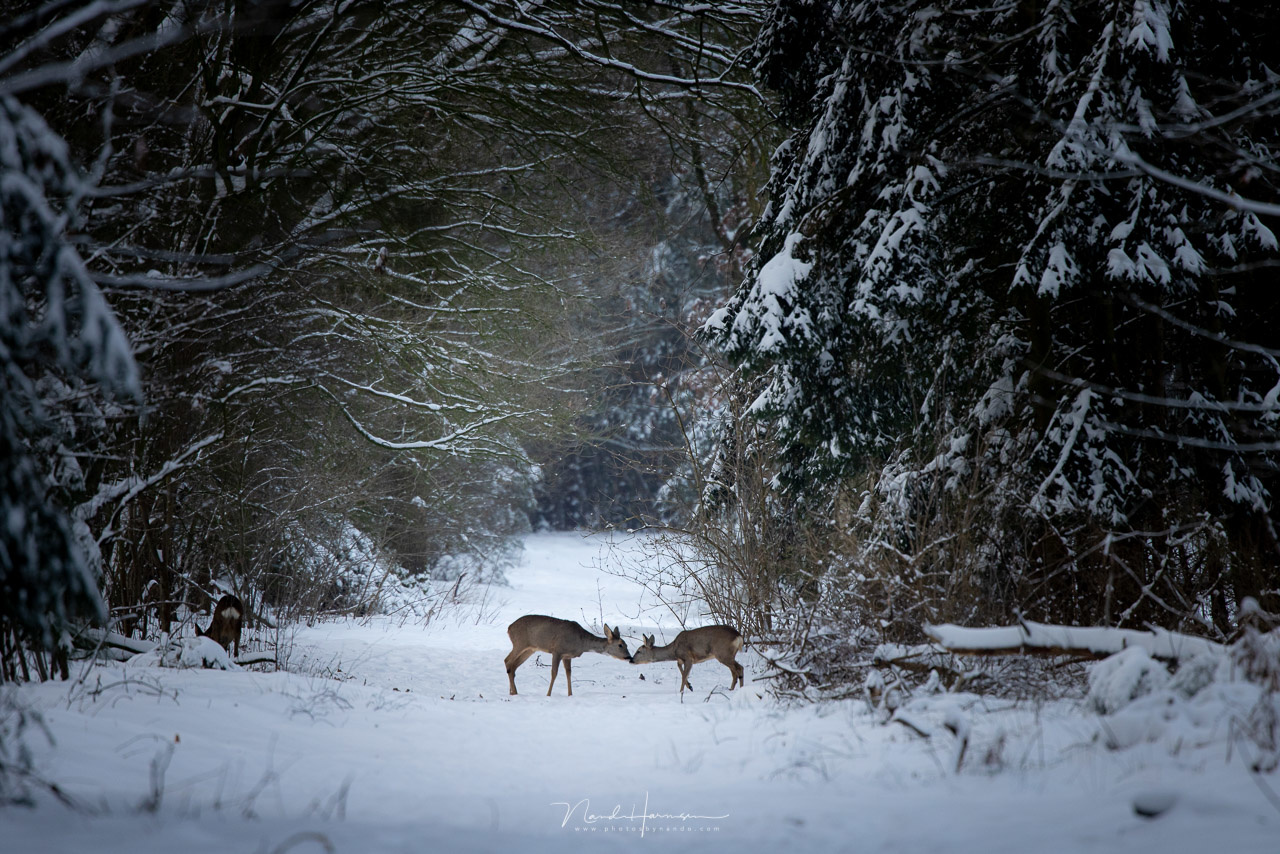



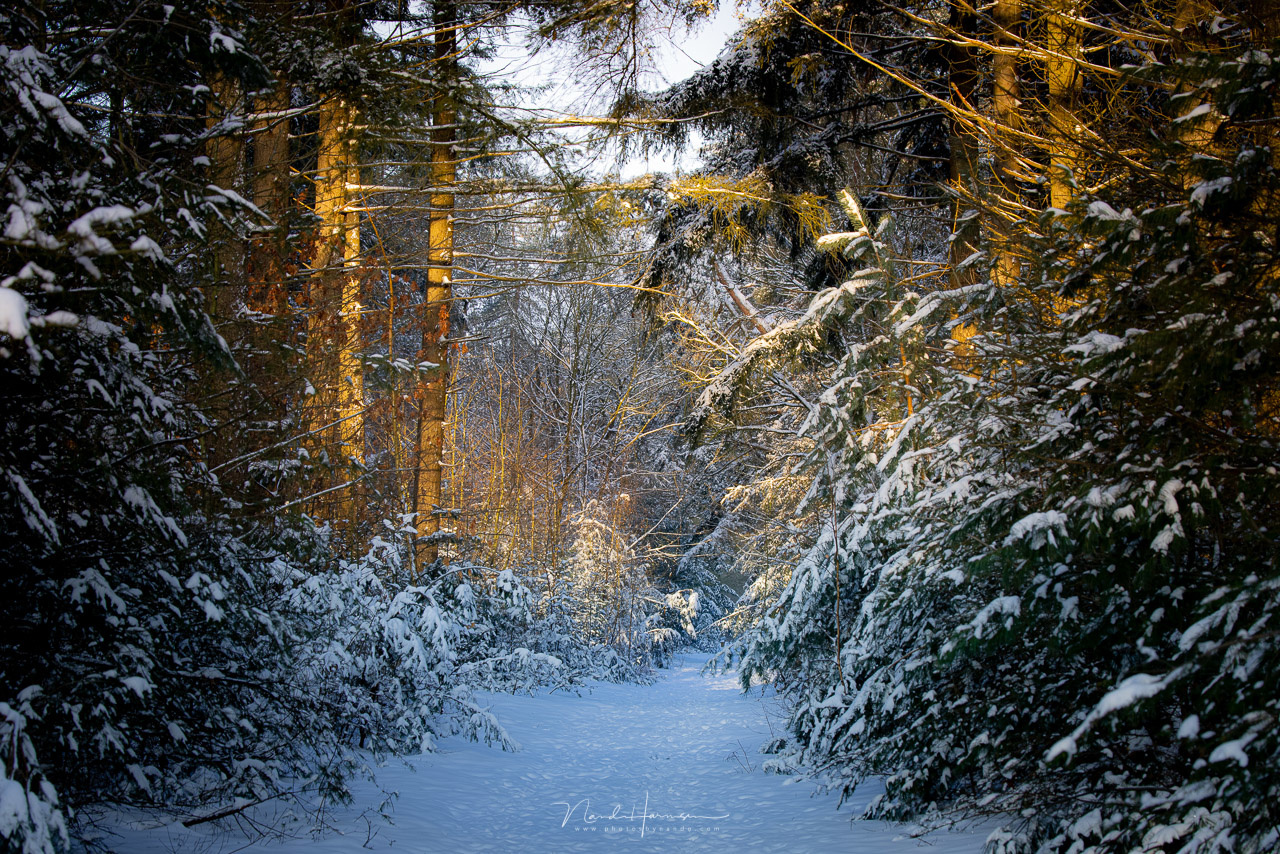

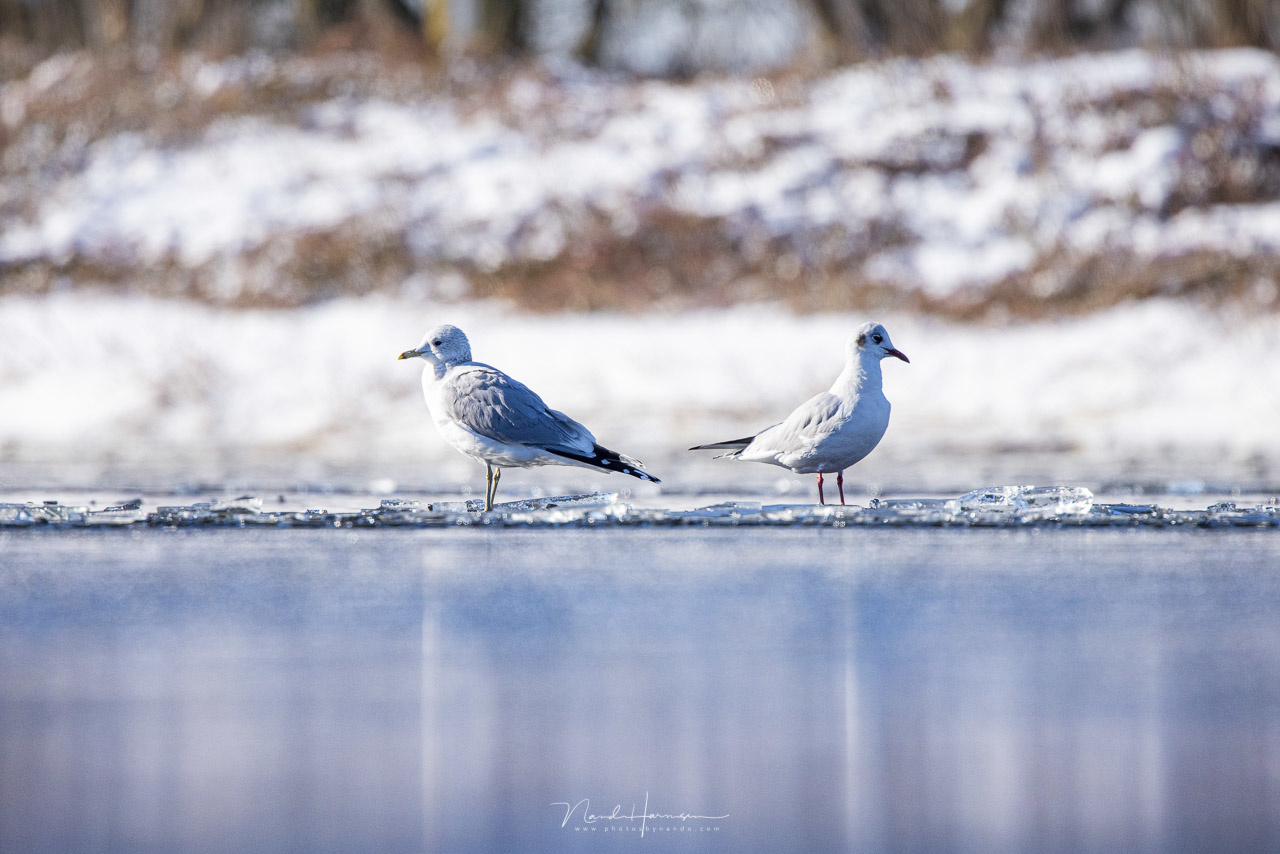

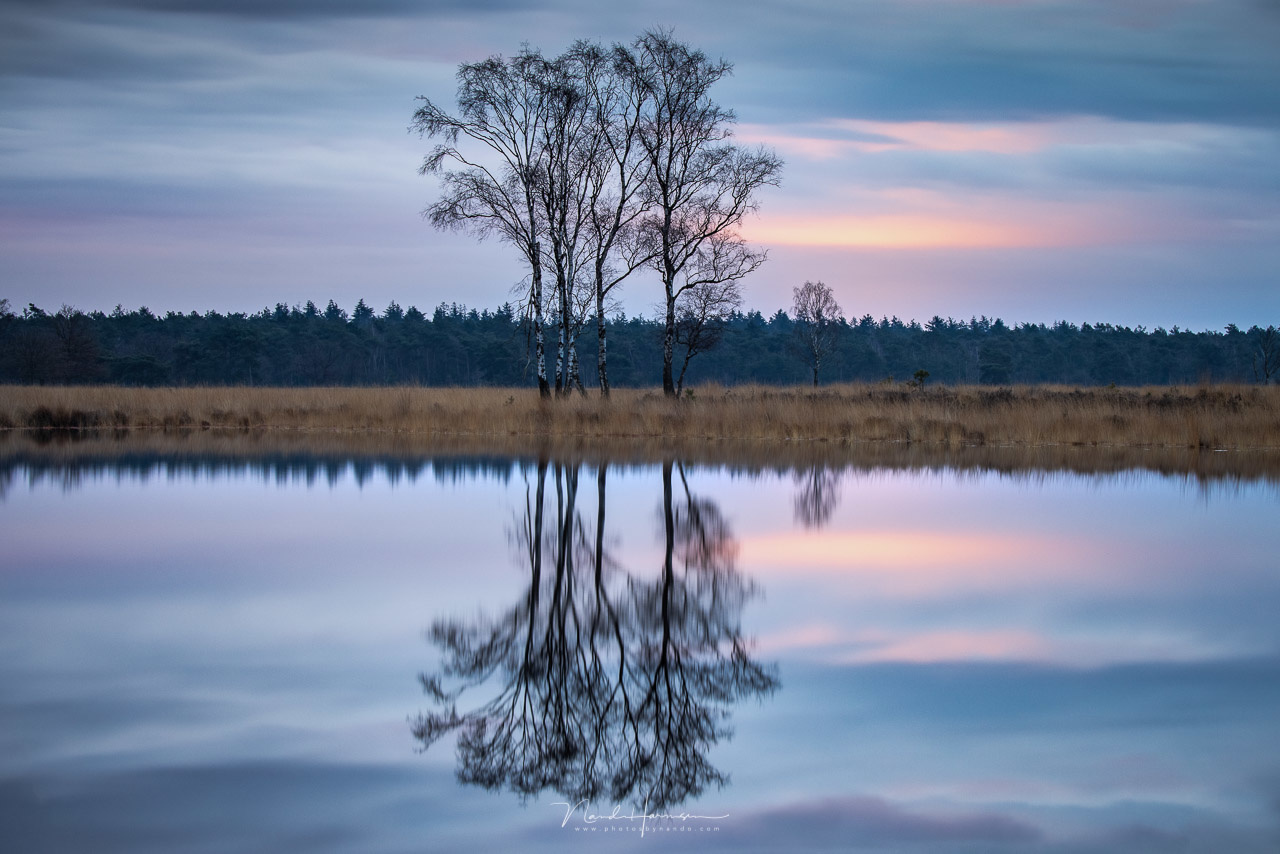







Probably got a workout holding those two cameras out like that for the picture!
We could use a fast shutter speed for that shot. So you don't see the tremble of my arms
;)
I traded in my 100-400 II in for the RF100-500 because I got a good trade in price. Image quality I think is about the same and the autofocus maybe just a little quicker for the RF. The RF definitely has better IS working with the IBIS in the R5 and R6.
For me I upgraded for the extra reach, I had to much gap between the 100-400 and my 600/4. I did my first trip with it last month and used it about as much or maybe a little more than my 600.
Don't know... Too much compromises IMHO. 2700$ X external zoom X f7.1 ? I think Sony did much better with surprisingly good 200-600. 1800$ X internal zoom X f6.3 and about 500gr difference is not a big deal.
The numbers sound great. Internal zoom makes the lens always as big as its longest focal length. Something to take into account, of course. But internal or external doesn't make any difference regarding the image quality.
About the f/6,3 and f/7,1 - The difference is only 1/3 stop, which I find negligable.
If you find that much better, it's clear which lens is for you.
For myself, I would never buy a Sony lens. Not in a million years. But that is because I use a different brand camera. It doesn't fit
;)
For video work, which tripod do you recommended? I currently use a Manfrotto 055C with a 504 head and it does not work out too well with a Sony FS5ii and a Nikon 80-400 mm f/5.6 lens. I just got the RED Komodo and plan to get this lens for a safari. With the RF 24-105 f/4 lens, the whole camera package is right at 8 pounds. I was thinking of getting a Schatler FSB8 to see if it stabilizes the camera better, but that would be a pain to transport it.
I don't know. A stable one that holds your camera. And one with a geared head, I think.